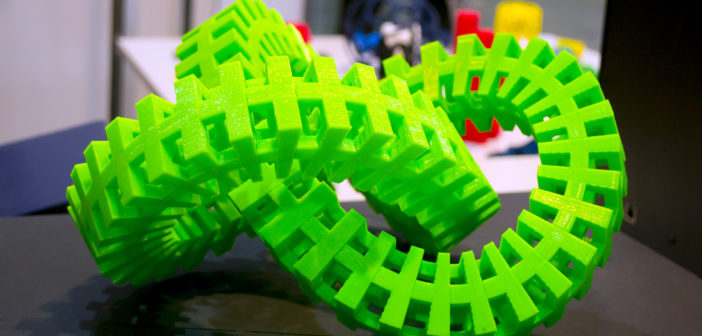Additive manufacturing (AM) represents a huge advance in how we design parts and customise products. It also shortens product development cycles because design changes can be rapidly deployed to production. And it has an important role to play in making manufacturing more sustainable. Given how AM can help multiple sectors innovate, the big question is why does its industrial use remain largely limited to specific applications within the aerospace and medical industries? A large part of the answer lies in the daunting choice of AM technologies and materials and the associated lack of widely understood processes.
Cost-effective, repeatable manufacturing depends on accurate information being applied from concept to production. Unless users are already knowledgeable about AM, they will stumble from a lack of visibility on how to mix and match materials and machines to create new workflows and products. The problem is amplified because AM material and process selection choices are closely entwined and impact all areas of product design, including cost, weight, how it will perform, and its environmental impact.
The choices available reflect a design freedom that is the major strength of AM. At the same time the options need to be simpler to navigate. Especially because AM is such a hotbed of manufacturing innovation, meaning new materials and solutions arrive regularly on the market. That is why we’re working with players across the ecosystem to dispel the fog around AM processes and technologies and put the right data within the reach of wider product development and manufacturing teams.
Which additive technology?
We have integrated the Senvol Database with our Material Lifecycle Management software, MaterialCenter, so that manufacturing engineers can research the best material-machine combinations for a project from more than 1,200 machines and 2,500 materials on the market, using advanced search functions. Shortlisted materials can be compared to the project requirements and the company’s proprietary tests, in situ with cross-plotting functions.
AM is like any other modern manufacturing process in that it starts with a digital CAD file and ends up with a viable physical product that meets quality and repeatability requirements. Where additive processes can differ is in their emphasis on design. DfAM (design for additive manufacturing) is a crucial step that uses simulation tools to optimise material topology and resolve problems such as internal stresses and deviations that could arise while the product is being built. Design teams can easily export ready-to-use material cards from MaterialCenter to use Computer Aided Engineering (CAE) and validate that parts can be additively manufactured with the chosen technology.
However, the manufacturing process can have a profound effect on the performance of the final part – be it stiffness, or strength. When it comes to metal additive manufacturing processes, it is possible in many cases to compensate accurately using virtual manufacturing tools. But for polymers and composites success depends on having the foreknowledge to predict and optimise printing.
Which material?
Once equipped with the right data and simulation tools, additive manufacturers are in a prime position to fully benefit from the advantages of integrated computational materials engineering (ICME). ICME unifies digital processes – from materials engineering and product development, through to manufacturing – to ensure the optimal combination of materials and manufacturing processes. And because ICME offers a thorough understanding of the chemical composition and behaviour of a material at the microstructural level, in the coupon and in the manufactured part, it helps engineers fully exploit the benefits of AM.
Data plays an important role in helping designers apply 3D printing processes, where a lack of familiarity with how material performance is transformed by the printing processes can result in costly trial and error and overengineered products. So, Hexagon has made it possible for engineers to request highly accurate material and printing machine models directly from suppliers via its Materials Exchange platform. They can then use this information to optimise the design of parts that make best use of the specific material and target 3D printer’s capabilities.
The Materials Exchange platform is part of Hexagon’s 10xICME solution. It enables engineers to compare AM technologies used internally with new products available on the market and then apply the chosen technology optimally. MaterialCenter makes these material cards and toolpaths available directly from the supplier to all who need them, so they can embed a digital twin in the design engineer’s CAE tools and make ultimate use of the material. Crucially, MaterialCenter also makes it much easier to tap into internal expertise and trace the material through to physical testing to validate virtual engineering.
Breaking down silos
Today within large organisations, AM teams often work in product silos dotted around the business, with no easy way to share knowledge and processes between different pockets of expertise. An engineer designing a part, for example, may have to default to legacy design values to assess the impact of their colleague’s choice of material and manufacturing processes. The chances of success would be much greater if they could tap into material data and process insights and pool and exchange valuable lessons from previous internal AM trials, failed prototypes, or material and quality testing.
With Hexagon’s MaterialCenter 2021 it is significantly easier to manage composite materials end-to-end, across silos, enabling the complete traceability and pedigree of data that is crucial to controlling and understanding AM processes with a high degree of variability.
Learn more about how ICME enables digital transformation in composites manufacturing in our webinar.














